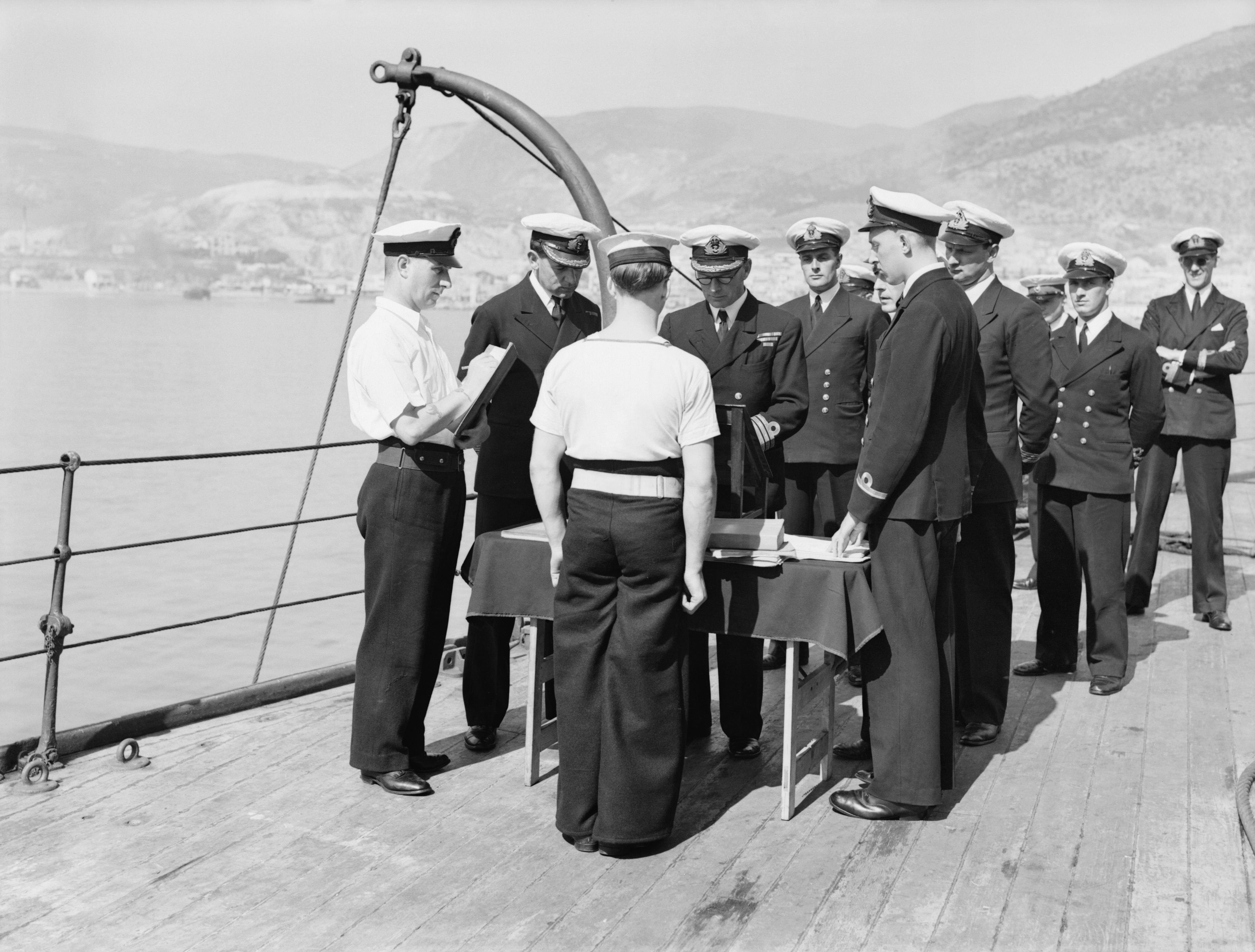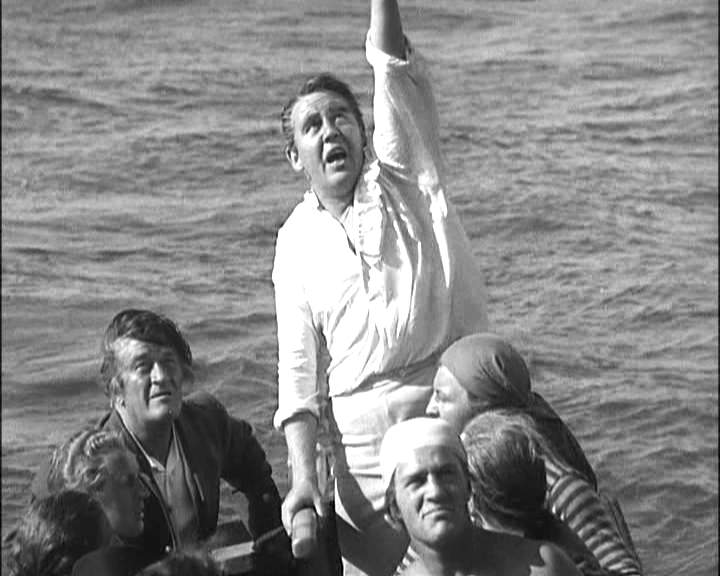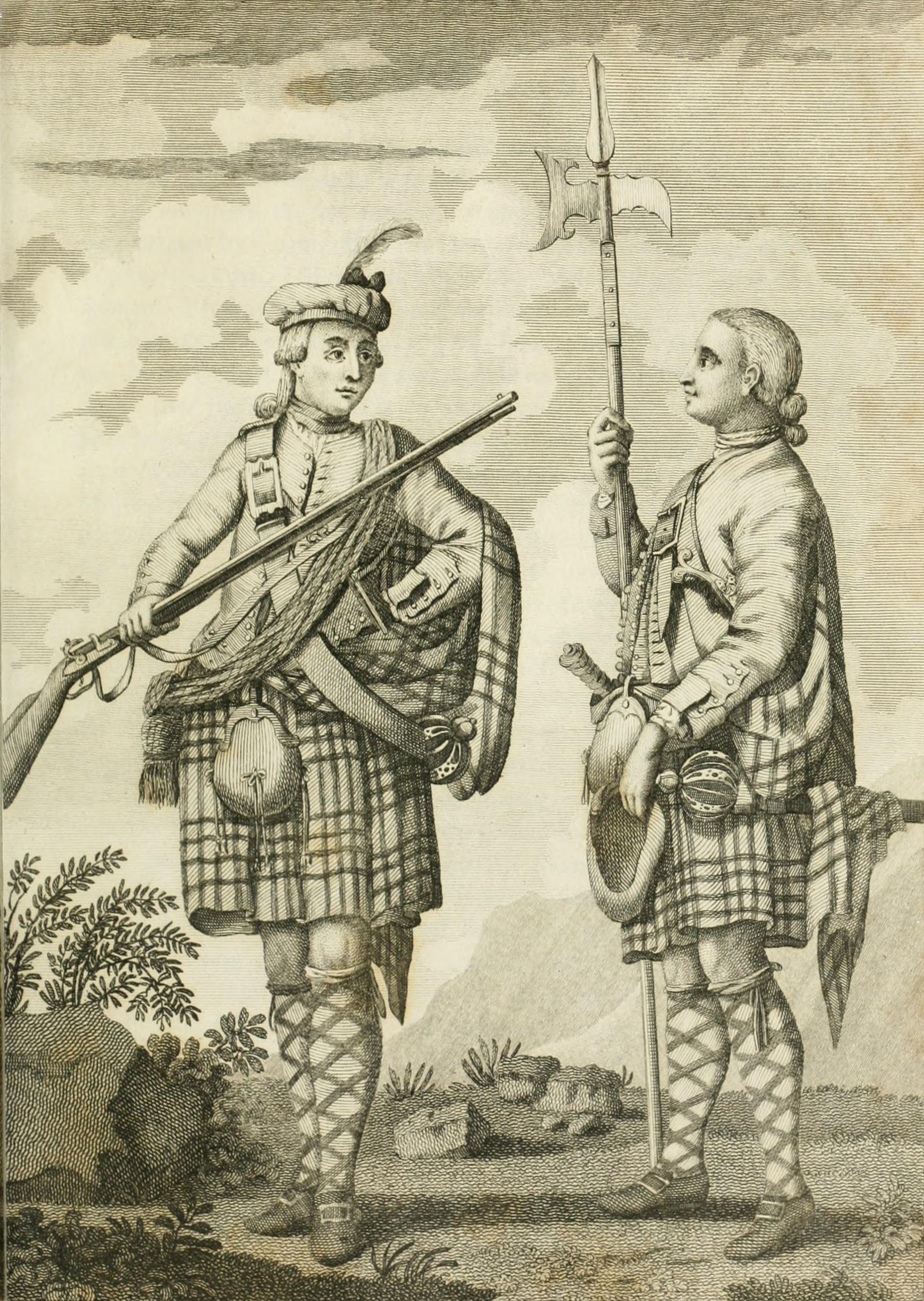|
Charles Churchill (mutineer)
Charles Churchill (1759–1790) was the master at arms on board HMAV ''Bounty'' during Lieutenant William Bligh's voyage to Tahiti to transplant breadfruit to the British colonies in the West Indies. During a mutiny on the ship, Acting Lieutenant Fletcher Christian seized command of the ship from Bligh on 28 April 1789. Churchill was an active member of the mutiny, being a member of Fletcher Christian's loyalists that arrested Bligh in his cabin. Early life and navy career Churchill was born in Manchester in 1759. Little else is recorded of his early life in England. Between August and the October of 1787, ''Bounty''s crew was being assigned for the voyage to Tahiti. On 7 September 1787, Churchill signed on as the ships corporal, a task including the assistance of maintaining the order amongst the crew. Desertion during ''Bounty'' expedition On 5 January 1789 while at Tahiti and three months before departure, three crew members, Charles Churchill, along with the gunner’s ... [...More Info...] [...Related Items...] OR: [Wikipedia] [Google] [Baidu] |
Master-at-arms
A Master-at-Arms (US: MA; UK & some Commonwealth: MAA) may be a naval rating, responsible for law enforcement, regulating duties, security, anti-terrorism/force protection (AT/FP) for/of a country's navy; an army officer responsible for physical training; or a member of the crew of a merchant ship (usually a passenger vessel) responsible for security and law enforcement. In some navies, a ship's corporal is a position—not the rank—of a petty officer who assists the master-at-arms in his various duties. Historically, a master-at-arms was responsible for the training of soldiers during peace time, or actively involved in leading the defense of a fortification during war time. In some countries, the term "Navy Police" is used for an institution part of a navy responsible for law enforcement, such as the Royal Navy Police, known as the Royal Navy Regulating Branch until 2007. South Africa United Kingdom Royal Navy The master-at-arms (MAA) is a ship's senior rating, normal ... [...More Info...] [...Related Items...] OR: [Wikipedia] [Google] [Baidu] |
Taiarapu (other) , Tahiti, a commune
{{geodis ...
Taiarapu may refer to: *Taiarapu, or Tahiti-Iti, the southeast portion of Tahiti, French Polynesia * Taiarapu-Est, Tahiti, a commune *Taiarapu-Ouest Taiarapu-Ouest (literally "Ta'iarapu West") is a commune in France, commune of French Polynesia, an overseas territory of France in the Pacific Ocean. The commune of Tai'arapu-Ouest is located on the island of Tahiti, in the French Polynesia#Admi ... [...More Info...] [...Related Items...] OR: [Wikipedia] [Google] [Baidu] |
HMS Bounty Mutineers
The mutiny on the Royal Navy vessel occurred in the South Pacific Ocean on 28 April 1789. Disaffected crewmen, led by acting-Lieutenant Fletcher Christian, seized control of the ship from their captain, Lieutenant William Bligh, and set him and eighteen loyalists adrift in the ship's open launch. The mutineers variously settled on Tahiti or on Pitcairn Island. Bligh navigated more than in the launch to reach safety, and began the process of bringing the mutineers to justice. ''Bounty'' had left England in 1787 on a mission to collect and transport breadfruit plants from Tahiti to the West Indies. A five-month layover in Tahiti, during which many of the men lived ashore and formed relationships with native Polynesians, led those men to be less amenable to military discipline. Relations between Bligh and his crew deteriorated after he allegedly began handing out increasingly harsh punishments, criticism, and abuse, Christian being a particular target. After three weeks bac ... [...More Info...] [...Related Items...] OR: [Wikipedia] [Google] [Baidu] |
The Bounty (1984 Film)
''The Bounty'' is a 1984 British historical film, historical Drama (film and television), drama film directed by Roger Donaldson, starring Mel Gibson and Anthony Hopkins, and produced by Bernard Williams with Dino De Laurentiis as executive producer. It is the fifth film version of the story of the Mutiny on the Bounty, mutiny on the ''Bounty''. The supporting cast features Laurence Olivier, Daniel Day-Lewis, Liam Neeson and Edward Fox (actor), Edward Fox. The screenplay by Robert Bolt was based on the book ''Captain Bligh and Mr Christian'' (1972) by Richard Hough. The film was made by Dino De Laurentiis Productions and Bounty Productions Ltd. and distributed by Orion Pictures Corporation and Thorn EMI, Thorn EMI Screen Entertainment. The music score was composed by Vangelis and the cinematography designed by Arthur Ibbetson. Plot The film is set as flashbacks from the court martial at Portsmouth of Commanding Lieutenant William Bligh for the loss of to mutineers, led by hi ... [...More Info...] [...Related Items...] OR: [Wikipedia] [Google] [Baidu] |
Liam Neeson
William John Neeson (born 7 June 1952) is an actor from Northern Ireland. He has received several accolades, including nominations for an Academy Award, a British Academy Film Award, and two Tony Awards. In 2020, he was placed 7th on ''The Irish Times'' list of Ireland's 50 Greatest Film Actors. Neeson was appointed Officer of the Order of the British Empire (OBE) in 2000. In 1976, Neeson joined the Lyric Players' Theatre in Belfast for two years. He then acted in the Arthurian film ''Excalibur'' (1981). He appeared in supporting roles in '' The Bounty'' (1984), '' The Mission'' (1986), and ''Husbands and Wives'' (1992). He rose to prominence after his leading performance as Oskar Schindler in Steven Spielberg's holocaust drama ''Schindler's List'' (1993). He continued to star in dramas such as ''Nell'' (1994), '' Rob Roy'' (1995), ''Michael Collins'' (1996), and ''Les Misérables'' (1998). In 1999 he took the role of Qui-Gon Jinn in George Lucas' space opera '' Star Wars: ... [...More Info...] [...Related Items...] OR: [Wikipedia] [Google] [Baidu] |
Mutiny On The Bounty (1935 Film)
''Mutiny on the Bounty'' is a 1935 Metro-Goldwyn-Mayer drama film directed by Frank Lloyd and starring Charles Laughton and Clark Gable, based on the 1932 Charles Nordhoff and James Norman Hall novel ''Mutiny on the Bounty''. Despite historical inaccuracies, the film was a huge box office success, becoming the highest-grossing film of 1935 and one of MGM's biggest hits of the 1930s. The film received a leading eight nominations at the 8th Academy Awards, winning only Best Picture. Plot One night in Portsmouth, England, in 1787, a press gang breaks into a local tavern and presses all of the men drinking there into naval service. One of the men enquires as to what ship they will sail on, and the press gang leader informs him that it is . Upon inquiring as to who the captain is, another man is told the captain is William Bligh (Charles Laughton) and attempts to escape, as Bligh is a brutal tyrant who routinely administers harsh punishment to officers and crew alike who lack dis ... [...More Info...] [...Related Items...] OR: [Wikipedia] [Google] [Baidu] |
Pat Flaherty (actor)
Edmund Joseph Flaherty (March 8, 1897 – December 2, 1970) was an American film actor who appeared in about 200 films. Biography Early life Flaherty was born Edmund Joseph Flaherty in Washington, D.C.; the son of Mary Rose Ella (née Wilson) and Michael Joseph Flaherty. He was the older brother of writer Vincent X. Flaherty. Flaherty had Irish ancestry. Pat attended Eastern High School, and Dean College in Franklin, Massachusetts. After playing baseball, he attended Princeton University and graduated on January 26, 1918. Flaherty served in the United States Army during the Pancho Villa Expedition and then as a pilot in World War I. Early athletic career Flaherty was a popular Washington, D.C. athlete and coach, who went on to become a professional baseball and football player who pitched for John McGraw's New York Giants, and punted for George Halas' Chicago Bears. After his professional athletic career ended, he went into the music publishing business with the legendary ... [...More Info...] [...Related Items...] OR: [Wikipedia] [Google] [Baidu] |
Brown Bess
"Brown Bess" is a nickname of uncertain origin for the British Army's muzzle-loading smoothbore flintlock Land Pattern Musket and its derivatives. The musket design remained in use for over a hundred years with many incremental changes in its design. These versions include the Long Land Pattern, the Short Land Pattern, the India Pattern, the New Land Pattern Musket and the Sea Service Musket. The Long Land Pattern musket and its derivatives, all 0.75 inch calibre flintlock muskets, were the standard long guns of the British Empire's land forces from 1722 until 1838, when they were superseded by a percussion cap smoothbore musket. The British Ordnance System converted many flintlocks into the new percussion system known as the Pattern 1839 Musket. A fire in 1841 at the Tower of London destroyed many muskets before they could be converted. Still, the Brown Bess saw service until the middle of the nineteenth century. Most male citizens of the thirteen colonies of British Americ ... [...More Info...] [...Related Items...] OR: [Wikipedia] [Google] [Baidu] |
Dutch East Indies
The Dutch East Indies, also known as the Netherlands East Indies ( nl, Nederlands(ch)-Indië; ), was a Dutch colony consisting of what is now Indonesia. It was formed from the nationalised trading posts of the Dutch East India Company, which came under the administration of the Dutch government in 1800. During the 19th century, the Dutch possessions and hegemony expanded, reaching the greatest territorial extent in the early 20th century. The Dutch East Indies was one of the most valuable colonies under European rule, and contributed to Dutch global prominence in spice and cash crop trade in the 19th to early 20th centuries. The colonial social order was based on rigid racial and social structures with a Dutch elite living separate from but linked to their native subjects. The term ''Indonesia'' came into use for the geographical location after 1880. In the early 20th century, local intellectuals began developing the concept of Indonesia as a nation state, and set the stage ... [...More Info...] [...Related Items...] OR: [Wikipedia] [Google] [Baidu] |
Pōmare I
Pōmare I (c. 1753 – September 3, 1803) (fully in old orthography: Tu-nui-ea-i-te-atua-i-Tarahoi Vaira'atoa Taina Pōmare I; also known as Tu or Tinah or Outu, or more formally as Tu-nui-e-a'a-i-te-atua) was the unifier and first king of Tahiti and founder of the Pōmare dynasty and the Kingdom of Tahiti between 1788 and 1791. He abdicated in 1791 but remained in power as the guardian regent during the minority of his successor Pōmare II from 1791 until 1803. He is best known in the western world for being the ruler of Tahiti during the mutiny on the ''Bounty'' in 1789. Name ''Outu'' is the phonetic English rendering of ''O Tū'', Tū being the name, o the nominal predicate meaning ''that is''. Older literature writes his family name as Tunuieaiteatua, which leaves incertainties about the proper pronunciation as Tahitian usually did (and does) not write macrons and glottals. Barring this incertainty, in the current proper orthography would be Tū-nui-ēa-i-te-atua mea ... [...More Info...] [...Related Items...] OR: [Wikipedia] [Google] [Baidu] |
Edward Christian
Edward Christian (3 March 1758 – 29 March 1823) was an English judge and law professor. He was the older brother of Fletcher Christian, leader of the mutiny on the ''Bounty''. Life Edward Christian was one of the three sons of Charles Christian of Moorland Close and of the large Ewanrigg Hall estate in Dearham, Cumberland, an attorney-at-law descended from Manx gentry, and his wife Ann Dixon. Charles's marriage to Ann brought with it the small property of Moorland Close, "a quadrangle pile of buildings ... half castle, half farmstead." Charles died in 1768 and Edward's mother Ann proved herself irresponsible with money. By 1779, Ann had run up a debt of nearly £6,500 (equal to £ today), and faced the prospect of debtors' prison. Moorland Close was lost and Ann and her younger children were forced to flee to the Isle of Man, where English creditors had no power. The three elder Christian sons managed to arrange a £40 (equal to £ today) per year annuity for their mot ... [...More Info...] [...Related Items...] OR: [Wikipedia] [Google] [Baidu] |
HMS Bounty
HMS ''Bounty'', also known as HM Armed Vessel ''Bounty'', was a small merchant vessel that the Royal Navy purchased in 1787 for a botanical mission. The ship was sent to the South Pacific Ocean under the command of William Bligh to acquire breadfruit plants and transport them to the West Indies. That mission was never completed owing to a 1789 mutiny led by acting lieutenant Fletcher Christian, an incident now popularly known as the mutiny on the ''Bounty''. The mutineers later burned ''Bounty'' while she was moored at Pitcairn Island. An American adventurer helped land several remains of ''Bounty'' in 1957. Origin and description ''Bounty'' was originally a collier, ''Bethia,'' reputedly built in 1784 at Blaydes Yard in Hull, Yorkshire in England. The Royal Navy purchased her for £1,950 on 23 May 1787 (), refit, and renamed her ''Bounty.'' The ship was relatively small at 215 tons, but had three masts and was full-rigged. After conversion for the breadfruit expedit ... [...More Info...] [...Related Items...] OR: [Wikipedia] [Google] [Baidu] |






